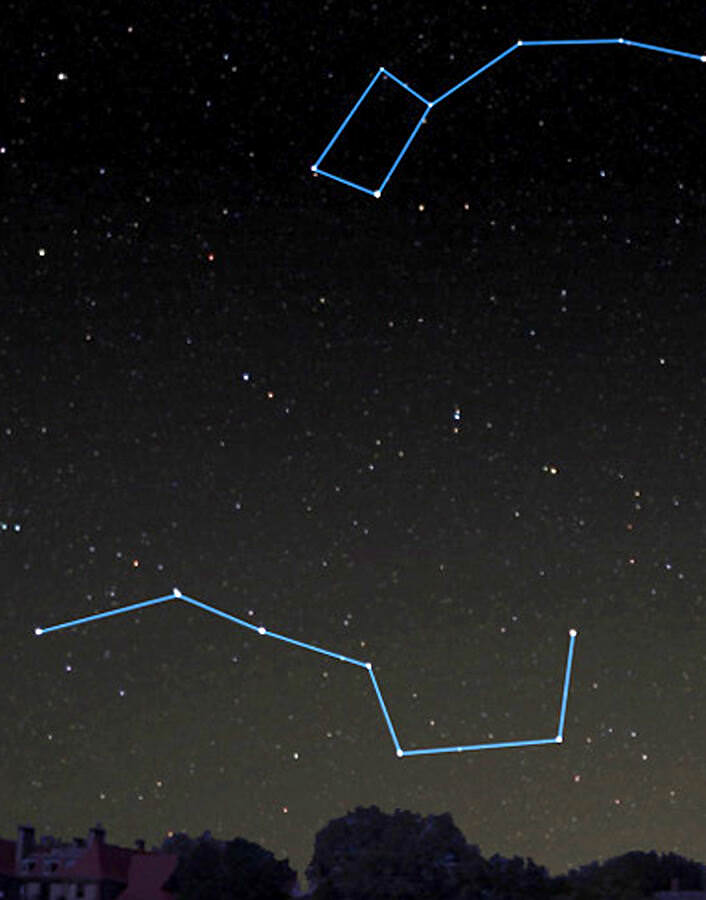Which celestial objects are included in the Solar System?
The solar system contains an infinite number of objects, with many still undiscovered by astronomers! However, which objects make up the foundation of our planetary system?
The planetary system revolves around a solitary star, known as the Sun. It comprises over 99.86% of all the substance that constitutes the solar system. Multiple objects orbit around the Sun, with the largest among them being the planets. There are four terrestrial planets:
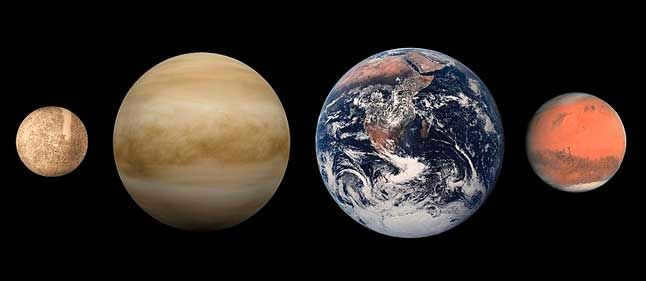
The four inner planets of the solar system, namely Mercury, Venus, Earth, and Mars, are situated in close proximity to the star. In addition to these terrestrial planets, there are four more planets that belong to the gas giant group:
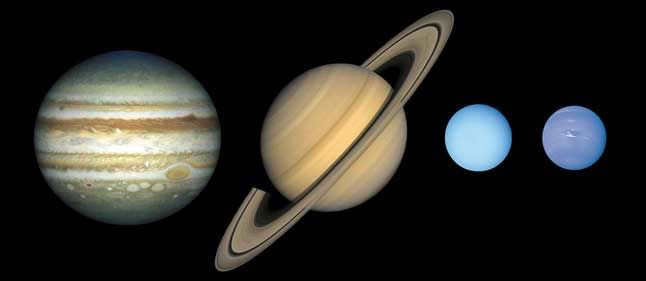
The order of giant planets, from left to right, is Jupiter, Saturn, Uranus, and Neptune.
These celestial bodies are positioned at a much greater distance from the central star. It is possible that there are even more remote planets situated beyond the orbit of Neptune, although current technological advancements do not yet permit a comprehensive exploration of the entire expanse of the solar system.
There are dwarf planets orbiting the Sun as well. While regular planets dominate their orbits by being the only large objects in them, dwarf planets might have orbits filled with other equally large bodies. As of 2019, Ceres (situated between Mars and Jupiter), along with Pluto, Erid, Makemake, and Haumea, which have orbits beyond Neptune, hold the official status of minor planets. There are numerous objects in that region that could also meet the criteria for being classified as dwarf planets.
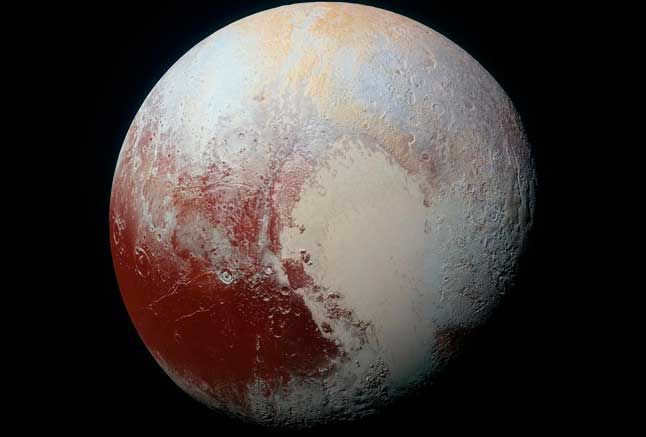
Pluto
Asteroids and comets are smaller celestial bodies that also revolve around the Sun. Unlike planets, asteroids and comets have irregular shapes. Over 700,000 asteroids have been discovered so far, but there are likely many more. Many asteroids are located in the asteroid belt near the orbit of Ceres, while another large cluster is found beyond the orbit of Neptune in the Kuiper belt. There are also objects in the scattered disc, which are even farther away. The existence of the Oort cloud is theoretically predicted, but the objects within it are currently impossible to observe.
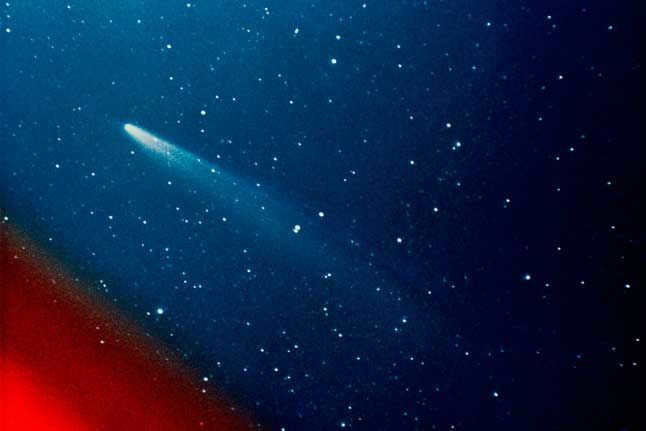
Comet Kogouteka (C/1973 E1).
All of the celestial bodies mentioned above revolve around the Sun. However, the Solar System also consists of satellites – objects that orbit planets (including dwarf planets) and even asteroids. The largest satellite, Ganymede, is even bigger than Mercury. The Moon is also considered a satellite.
List of references used
– https://vashurok.ru/questions/kakie-kosmicheskie-tela-obrazuyut-solnechnuyu-sistemu – https://resheba.me/gdz/geografija/5-klass/alekseev/5
Astronomy. Different Branches of Astronomy
Author: astrologer Nina Strelkova
The term “astronomy” is coined from the combination of two Greek words astron (star) and nomos (law), meaning “law of the stars” or “stellar law”. The field of astronomy encompasses the study of not only stars, but also other celestial bodies and the systems they form. It aims to understand the structure and evolution of cosmic entities and investigates the laws governing the universe.
This ancient field of study emerged to assist individuals in navigating through time and space, leading to the creation of calendars, geographical maps, and navigation instruments based on astronomical knowledge. Furthermore, it facilitates the prediction of various natural phenomena that are in some way connected to the movement of celestial bodies. Modern astronomy
encompasses multiple branches.
Spherical astronomy
By utilizing mathematical techniques, the field of astronomy investigates the apparent position and movement of celestial bodies such as the Sun, Moon, stars, planets, and satellites, both natural and artificial, on the celestial sphere. This branch of astronomy is closely tied to the development of the theoretical foundations of timekeeping.
Applied astronomy
focuses on the knowledge and utilization of astronomical instruments and methods for determining time, geographic coordinates, and azimuths based on astronomical observations. It serves practical purposes and is categorized into three types based on the location of application: aeronautical, geodetic, and nautical.
Astrophysics is the study of the physical state and chemical composition of celestial bodies and their systems, as well as the interstellar and intergalactic environments and the processes occurring within them. It is a branch of astronomy that is further divided into various sections based on the specific objects being studied, such as the physics of planets, natural satellites, the Sun, interstellar medium, stellar atmospheres, and the internal structure and evolution of stars.
Celestial mechanics, on the other hand, focuses on the motion of celestial bodies within the solar system, including comets and artificial satellites, in relation to their gravitational field. This field also involves the compilation of ephemerides, which are tables or predictions of celestial positions and movements.
Geodesy is another section of astronomy that deals with measuring the coordinates of celestial objects and studying the Earth’s rotation.
Research focuses on the study of stellar systems, including clusters and galaxies, and explores their composition, structure, dynamics, and evolution.
Extragalactic astronomy
Investigates cosmic celestial bodies beyond our own stellar system, such as other galaxies, quasars, and other distant objects.
Explores the origins and development of cosmic bodies and their systems, encompassing the entire solar system, as well as planets, stars, and galaxies.
– Examines the physical properties of the Universe as a whole, drawing conclusions from observations and studies of the observable portion of the Universe.
Planetary Rotation around the Sun
The Sun acts as a gravitational force that enables all planets to orbit around it, making them integral parts of the solar system. This powerful force of attraction keeps these celestial bodies in a stable formation, akin to a ball tethered to a string.
It is worth noting that our star, the Sun, is significantly older than the surrounding celestial objects. These objects came into existence as a result of a cloud of cosmic dust. As the Sun traversed through this cloud, it exerted its gravitational pull, causing the cloud to coalesce and eventually form planets. During this process, the majority of the cloud remained behind the Sun, while a smaller portion moved ahead. As a result, the Sun is positioned near the center of this planetary formation, allowing for their rotation and interchange of positions.
Classification of celestial objects
Parshakov Evgeny Afanasyevich.
At first glance, all the celestial objects in the solar system possess a range of characteristics. However, they can be categorized into three major groups based on their composition. The first group consists of the most dense objects in the solar system, with a density of approximately 3 g/cm3 or higher. This group includes the planets of the Earth group: Mercury, Venus, Earth, and Mars. Additionally, certain large satellites of the planets such as the Moon, Io, Europa, and possibly Triton, along with several small satellites situated near their respective planets – Phobos, Deimos, Amalthea, and others – also belong to this group.
The fact that the most densely packed objects in the solar system consist of celestial bodies that are in close proximity to the central body they orbit is not a coincidence. The planets in the Earth group, being near the Sun, experience heating on their surfaces, which leads to the dissipation of gas and ice components from their atmospheres. This dissipation of light matter is facilitated by the conversion of mechanical energy into thermal energy through tidal friction. The closer a celestial body is to the central body, the stronger the tidal friction it experiences. This partly explains why Jupiter’s close satellites, Io and Europa, have densities of 3.5 and 3.1 g/cm3 respectively, while the more distant but more massive satellites Ganymede and Callisto have much lower densities of 1.9 and 1.8 g/cm3 respectively. This also explains why all the close satellites of a planet orbit synchronously, always facing the planet with the same side, resulting in their axial rotation periods being equal to their orbital rotation periods. However, tidal friction, which contributes to the heating and increased density of celestial bodies, is caused not only by the central bodies of their satellites, but also by satellites of the central bodies, as well as by other celestial bodies belonging to the same class, such as satellites of other close satellites and planets of other planets.
Celestial bodies that possess a high density can be classified as silicate celestial bodies, which means that their primary component is silicate (rock-metal rocks). Silicate celestial bodies are comprised of heavy and highly resistant substances such as silicon, calcium, iron, aluminum, magnesium, sulfur, and various other elements and compounds, predominantly with oxygen. In addition to the silicate component, many celestial bodies in this group also contain ice (water ice, water, carbon dioxide, nitrogen, oxygen), while only a small proportion have gas (hydrogen, helium) components. However, the presence of gas in their overall composition is negligible. Typically, the silicate component accounts for over 99% of the substance.
In addition to four planets and a dozen satellites, the Solar System is home to a diverse group of silicate celestial bodies. These include numerous asteroids that orbit in the asteroid belt between Mars and Jupiter. Some of the largest asteroids in this belt are Ceres, Pallada, Vesta, Hygeia, and more. Estimates suggest that there are tens of thousands, or possibly even hundreds of thousands or millions, of asteroids in this region.
This collection of heavenly objects is the primary assembly of celestial bodies in the solar system and, seemingly, throughout the entire galaxy. Beyond Pluto, numerous scientists hypothesize the existence of additional planets. Undoubtedly, they are correct. The frosty celestial bodies are the most abundant and dominant group of celestial bodies within the Solar System, as well as in all other stellar-planetary systems, ranging from the tiniest to the grandest.
The icy bodies in our Solar System are primarily composed of various types of ice, including water ice, carbon dioxide, nitrogen, oxygen, ammonia, and methane. These icy components make up the majority of the mass in these celestial bodies. The remaining portion of the icy bodies is composed mainly of silicate materials. The gas component in both icy and silicate bodies is relatively small in comparison, primarily due to their relatively low mass. This means that they are unable to retain lighter gases such as hydrogen and helium near their surfaces for extended periods of time. These gases are dispersed throughout interplanetary space, with the exception of planets located far from the Sun, where the surface temperatures are extremely low.
Comets, which are small icy celestial bodies, can be found not only in the outer regions of the Solar System beyond Pluto, but also in the space between the orbits of the giant planets.
Giant planets, in contrast to other celestial objects, possess a rapid axial rotation and an expansive atmosphere composed primarily of hydrogen and helium. As a result, these planets may experience the leakage of lighter gases from their upper atmospheres into interplanetary space, particularly from their equatorial regions, due to the significant centrifugal force at play. For instance, Saturn exhibits upper cloud layers that rotate around its planetary center at a linear velocity of approximately 10 km/sec, whereas Earth’s velocity is a mere 0.5 km/sec. It is plausible to suggest that during previous galactic winters, these giant planets possessed even more robust and extended atmospheres, which were subsequently partially shed following the conclusion of subsequent galactic winters. Unlike icy and silicate celestial bodies, which lose their gaseous components due to their comparatively lower mass, gas planets like Jupiter undergo this loss as a result of their swift rotation.
Classification of celestial bodies
Upon initial observation, the celestial bodies within the solar system possess distinct characteristics. However, they can all be categorized into three main groups based on their composition. The first group comprises the densest bodies in the solar system, with a density of approximately 3 g/cm3 or higher. This group primarily includes the planets of the Earth group: Mercury, Venus, Earth, and Mars. Additionally, certain large satellites of the planets, such as the Moon, Io, Europa, and potentially Triton, as well as several small satellites situated in proximity to their respective planets – Phobos, Deimos, Amalthea, and others – also belong to this group.
The fact that the most compact objects in the solar system consist of celestial bodies in close proximity to their central body, around which they revolve, is not by chance. The close proximity of the Earth’s group of planets to the Sun plays a significant role in this phenomenon. The Sun’s heat not only warms the surface of these celestial bodies, but also facilitates the removal of gas and ice components from their surface and atmosphere. Additionally, the transfer of mechanical energy to thermal energy through tidal friction further aids in the dissipation of light matter. The intensity of tidal friction within celestial bodies is greater when they are closer to their central body. This explains why Jupiter’s close satellites, Io and Europa, have densities of 3.5 g/cm3 and 3.1 g/cm3, respectively, while the more distant and massive satellites Ganymede and Callisto have significantly lower densities of 1.9 g/cm3 and 1.8 g/cm3, respectively. This also accounts for the synchronous rotation of close satellites around their planets, where one side is always facing the planet, resulting in their axial rotation periods being equal to their orbital rotation periods. It’s important to note that tidal friction, which contributes to the heating and increased density of celestial bodies, is not only caused by their central bodies, but also by satellites of those central bodies, as well as by other celestial bodies of the same class, such as satellites of other close satellites and planets of other planets.
Celestial bodies that possess a high density can be referred to as silicate celestial bodies, indicating that the primary constituent within them is the silicate component (rock-metal rocks), which comprises the heaviest and most resistant substances such as silicon, calcium, iron, aluminum, magnesium, sulfur, and various other elements and their compounds, primarily with oxygen. In addition to the silicate component, many celestial bodies in this group contain ice (water ice, water, carbon dioxide, nitrogen, oxygen), and only a small fraction consists of gas (hydrogen, helium) components. However, their proportion in the overall composition of the substance is negligible. Typically, the silicate component accounts for over 99% of the substance.
There is another set of celestial objects that consists mainly of icy substances, making it the largest group of celestial bodies in the Solar System. This group includes the well-known planet Pluto, as well as numerous undiscovered transpluto planets and large satellites such as Ganymede, Callisto, Titan, Charon, and possibly two or three dozen other satellites. Additionally, all comets, which are estimated to number in the millions or even billions, belong to this group.
This collection of heavenly bodies is the primary assemblage of celestial entities within our solar system and, seemingly, throughout the entire Milky Way galaxy. It is widely believed by numerous scientists that there exist additional planets beyond Pluto. Without a doubt, these researchers are correct in their assertions. The frigid celestial bodies, without question, constitute the largest and most abundant group of entities within our Solar System, as well as within all other star-planetary systems, regardless of size.
The primary composition of the icy bodies in the Solar System consists of various icy substances, such as water ice, carbon dioxide, nitrogen, oxygen, ammonia, methane, and more. These icy components make up the majority of the matter in these celestial bodies. On the other hand, the remaining minor portion of these icy bodies is primarily composed of silicate materials. The gas component in both icy and silicate bodies is relatively insignificant, mainly due to their small mass. Consequently, these bodies are unable to retain light gases like hydrogen and helium near their surfaces for an extended period of time. These gases tend to disperse in interplanetary space, except in the case of planets located far from the Sun, where the surface temperature is extremely low.
Giant planets, unlike other celestial objects, have a rapid axial rotation and an expansive atmosphere composed mainly of hydrogen and helium. Consequently, their equatorial regions may experience a release of light gases into outer space from their upper atmospheres as a result of the significant centrifugal force. Saturn, for instance, exhibits upper cloud layers that revolve around the planet’s center at a linear velocity of approximately 10 km/sec, whereas Earth’s velocity is only about 0.5 km/sec. It is possible to hypothesize that in the past, during galactic winters, the giant planets possessed even more substantial and longer-lasting atmospheres, but subsequently lost a portion of them after the conclusion of subsequent galactic winters. While icy and rocky celestial objects lose their gas components due to their limited mass, gas planets, particularly Jupiter, lose theirs due to their rapid rotation.
Question Answer – Can you name the main types of celestial bodies?
There are various types of celestial bodies, including:
- Stars – enormous balls of gas that emit light and heat.
- Planets – celestial bodies that orbit around a star.
- Satellites – bodies that travel on a specific path around another object.
- Asteroids – small objects that orbit the sun.
The universe is estimated to be 13.8 billion years old and has a diameter of about 93 billion light years. This vastness means that there is still much to discover and explore in the cosmos. We are constantly amazed by the incredible and sometimes terrifying astronomical phenomena that exist in our universe.
Indeed, the Universe consists of more than 2 trillion trillion trillion galaxies, each of which is formed by the gravitational interaction between various astronomical entities. Gravity is the fundamental force that governs everything in the cosmos, and it is the presence of mass that enables the existence of this force.
Now, let’s consider the multitude of celestial bodies that exist. There are countless types, reflecting the immense expanse of the Universe. The sheer variety of objects that comprise the Universe is truly beyond comprehension. However, in this article, we will attempt to provide a comprehensive overview of this vast array of celestial entities.
What are the primary celestial bodies?
Astronomical bodies, also known as celestial bodies, are natural entities within the universe that have the ability to gravitationally interact with other objects. They are significant physical structures in the cosmos.
It is important to note that although they are often used interchangeably, astronomical bodies are not the same as astronomical objects. While an astronomical body is an individual structure, an astronomical object can be composed of multiple celestial bodies. For example, the solar system is an astronomical object formed by the combination of various astronomical bodies such as the Sun, planets, satellites, asteroids, and so on.
1. Star of Preons
Let’s begin with one of the most peculiar celestial objects (if not the most peculiar) in the cosmos. We come across a hypothetical type of star (its existence has yet to be confirmed) that is incredibly minuscule, approximately the size of a golf ball… In theory, these celestial bodies would have formed following the demise and subsequent gravitational collapse of a star that was large enough to give birth to a black hole, but was left at the threshold.
In this regard, gravitational collapse does not generate a singularity (which is the catalyst for the birth of a black hole), but it does lead to the collapse of subatomic particles (including quarks of protons and neutrons), after which the inter-atomic distances vanish and exceedingly high densities come into existence.
If star preons were real, a single cubic meter of them would have a weight of around one quadrillion kilograms. However, it’s important to note that their existence has not yet been confirmed. Hypothetically, if they did exist, they would be the tiniest celestial objects in the entire universe, which could explain why we are unable to observe them from Earth. In essence, an entire star would be compressed into a small object comparable in size to an apple.
2. Meteoroid
On a daily basis, we engage in numerous activities. A meteoroid is a type of celestial body composed of rock, varying in size from 100 micrometers to 50 meters, and these rocky entities orbit in close proximity to Earth (although this concept can be extended to any other planet). Typically, they are remnants of comets or asteroids that, drawn in by Earth’s gravitational force, penetrate our atmosphere and subsequently transform into meteorites.
3. Comet
4. Neutron star
Can you imagine a star that has the same mass as the Sun but is as small as Manhattan Island? This is what a neutron star is like, a type of celestial body that we have a lot of knowledge about, unlike a preon star. It is the densest astronomical body that has been scientifically proven to exist.
A neutron star forms when a supermassive star (millions of times larger than the Sun, but not massive enough to become a black hole) explodes, leaving behind a core where the protons and electrons of its atoms combine to form neutrons. This causes the distances between the atomic particles to disappear (unlike in preons where subatomic particles theoretically collapse), resulting in densities of about one trillion kilograms per cubic meter.
An asteroid is a rocky object in space that is bigger than a meteoroid but smaller than a planet. They are often smaller than a satellite and can have a diameter of up to 1000 km. These rocky bodies orbit the Sun, typically between the orbits of Mars and Jupiter in the Solar System. When an asteroid breaks apart, it can create smaller objects called meteoroids.
6. Satellite
A satellite is a celestial object that is mostly composed of rock and is usually larger than an asteroid. It is important to note that the defining characteristic of a satellite is its orbit around a planet. The Earth, for example, has one natural satellite, which is the Moon. However, the solar system as a whole has a total of 168 satellites that orbit the various planets.
7. Dwarf planets
Dwarf planets serve as the dividing line between a satellite and a full-fledged planet. Unlike satellites, they orbit around a star, but they fail to meet the requirement of clearing their orbit. Their mass is not substantial enough to eliminate other celestial bodies from their path. An excellent illustration of this is Pluto. With an altitude of 2376 km (which is nearly half the size of Ganymede, Jupiter’s largest satellite), Pluto is too diminutive to be classified as a planet in the truest sense of the term.
8. Terrestrial Worlds
A terrestrial world is a celestial object that revolves around a star and possesses a solid, rocky surface. Terrestrial planets, also referred to as telluric planets, are characterized by their high density, indicating that they are relatively small in size (for example, Earth has a diameter of 12,742 kilometers). These rocky worlds are typically found in close proximity to their host star.
Ice giants are celestial objects that primarily consist of heavy elements like nitrogen, carbon, sulfur, and oxygen (hydrogen and helium only account for 10% of their composition). They lack a solid surface but possess a higher density, making them larger than rocky bodies yet smaller than gaseous ones (Neptune serves as a notable example with a diameter of 24,622 km). With temperatures reaching approximately -218 °C, all of their constituents exist in a frozen state, which accounts for their composition being predominantly comprised of frozen water, methane, and ammonia.
10. Gas giants
Gas giants are the biggest planets in existence. They are celestial bodies that revolve around a parent star, similar to rocky bodies and ice giants. However, their composition is primarily made up of light elements, unlike ice. Approximately 90% of their composition is hydrogen and helium.
Gas giants lack a solid or icy surface and are predominantly made up of gas, with the exception of their planetary core. Due to their low density, they have immense size. For instance, Jupiter, the largest planet in our solar system, has a diameter of 139,820 kilometers.
11. Brown dwarfs
Similar to dwarf planets, brown dwarfs occupy a middle ground between a satellite and a full-fledged planet. They also lie between a gas giant and a true star. In essence, brown dwarfs are classified as failed stars.
Like planets, brown dwarfs have objects orbiting around them. However, due to their size and mass, they lack the necessary conditions for nuclear fusion reactions to occur in their core, which means they do not radiate light as brightly as stars do. While they are technically classified as stars, they reside on the boundary between a gas giant and a star.
Stars serve as the powerhouse of the entire universe. Our galaxy, known as the Milky Way, could potentially house over 400 billion of these celestial bodies. Stars are massive entities made up of plasma, a unique state of matter where particles are electrically charged, and they emit light at incredibly high temperatures.
Stars encompass a wide range of sizes, from red dwarfs that are half the size of our Sun to colossal red hypergiants that span a staggering 2.4 billion kilometers in diameter (compared to the Sun’s 1.39 million kilometer diameter). Regardless of their size, what truly matters is that all stars undergo nuclear fusion reactions within their cores, generating energy and causing them to radiate with their own unique brilliance.
13. Quasars
Quasars, also known as quasars, are among the most peculiar astronomical phenomena in the cosmos. These celestial entities, which are the brightest and most remote (and therefore ancient), consist of a supermassive black hole encircled by an immensely vast and scorching plasma disk. This disk emits a powerful stream of energy across the entire electromagnetic spectrum and propels particles at the velocity of light into outer space. As a result, quasars radiate with an intensity millions upon millions of times greater than that of an average star.
14. Black holes
Black holes are a highly peculiar phenomenon, but then again, there are many peculiar phenomena in the universe. These celestial bodies possess an incredibly powerful gravitational field that is so intense, it prevents any form of electromagnetic radiation, including light, from escaping its grasp. Furthermore, black holes exist outside the boundaries of conventional physics.
A black hole is born from the demise of a supermassive star, which must be at least 20 times more massive than our own Sun. The star’s gravitational collapse leads to the creation of a singularity, an area in the fabric of space-time that lacks volume yet possesses infinite mass.
The biggest black hole ever discovered is TON 618, situated at the heart of a galaxy 10 billion light years distant from our planet. This cosmic behemoth boasts a tremendous size, with a diameter measuring a staggering 390 million kilometers. To put things into perspective, this is equivalent to a distance 1,300 times greater than that between Earth and the Sun, or 40 times the distance between Neptune and the Sun. Truly mind-boggling!
We have reached the conclusion of our journey. Undoubtedly, nebulae are the largest celestial bodies in the cosmos. Nebulae are immense clusters of gas and cosmic debris, which can be described as sectors within a galaxy where gas (primarily hydrogen and helium) and solid particles of dust are held together by their own gravitational forces.
These clusters vary in size from 50 to 300 light years in diameter, indicating that they could potentially be 3,000 million million million kilometers in diameter. Additionally, these nebulae are crucial to the cosmos as they serve as factories for stars. Through the condensation of their particles over millions of years, stars and all the celestial bodies we have observed are able to be born.
Astronomical objects, which are not created by humans, make up celestial bodies found in space or originating from space. These objects encompass comets, planets, meteorites, asteroids, stars, and other entities.
Astronomy is the field of study dedicated to examining celestial bodies.
Overview
Celestial bodies come in a range of sizes, from immense to minuscule. Stars typically rank as the largest, while meteorites are often the smallest. Celestial bodies are organized into systems based on their characteristics and properties.
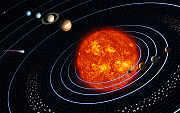
Displayed on the right side of the table is an illustration of the solar system, showcasing a model that includes a central star, known as the Sun, and the various planets that orbit around it. Among these planets, Earth stands out as it possesses natural satellites, which are celestial bodies in their own right. Positioned between the orbits of Mars and Jupiter lies the asteroid belt, a collection of individual bodies known as asteroids that also revolve around the Sun. There exists a theory suggesting that the asteroid belt arose due to the presence of another planet within the solar system that no longer exists (although an alternative theory posits that it represents an unfledged planet). Additionally, certain planets, such as Saturn, possess rings composed of dust particles that encircle them. These rings can be likened to the aforementioned asteroid belt, although in this case, they consist of significantly smaller bodies compared to asteroids and are centered around the planet itself.
Astronomical entities
Additional information
Remarks
Wikimedia Foundation. 2010.
Helpful
Discover what “heavenly body” signifies in other dictionaries:
heavenly body – dangaus kūnas statusas T sritis fizika atitikmenys: angl. heavenly body vok. Himmelskörper, m rus. heavenly body, n pranc. corps céleste, m … Fizikos terminų žodynas
heavenly body – ▲ material body ↑ (to be) in, space celestial bodies body in space. comet. globules. perseids. accretion. ♠ Universe ▼ star … Ideographic Dictionary of the Russian Language
A star is a celestial body that shines with its own light and appears as a bright point to observers on Earth. Stars are spread out throughout the universe at vast distances, making their own movements imperceptible. On a clear night without a moon, the entire visible sky can be filled with stars. This information can be found in the Encyclopedic Dictionary of F.A. Brockhaus and I.A. Efron.
A body, in mathematics, refers to a set with two operations (addition and multiplication) that possess specific properties. In geometry, a body is a portion of space enclosed by a closed surface. In physics, a body can refer to a complex system. Additional information can be found on Wikipedia.
Body is a noun, singular, and is most commonly used in the context of morphology. It can refer to matter, substance, and other related concepts. It is discussed in more detail in Dmitriev’s Explanatory Dictionary.
On the other hand, BODY1 is an adjective that can be used in its plural form, bodies. It is used to describe the human or animal organism in terms of its external physical forms and manifestations. For example, in a story by Yu. Bond., a character is described as straightening his two-meter body with feigned languor. Additionally, the Explanatory Dictionary of Russian Nouns mentions that a dog named Boye appeared as if broken in the back, emphasizing the physical body of the animal.
Celestial space and celestial bodies – Nouns LUNA/, me/yats, half-me/yats. A celestial body that orbits the Earth and is the closest natural satellite, visible at night due to the reflected sunlight, typically appearing yellow but sometimes reddish or white. NE/BO, sky/, sc. skysvo/d,… … Dictionary of Russian Language Synonyms
Meteoroid – Not to be confused with Meteorite. A meteoroid is a small celestial body that falls between interplanetary dust and an asteroid in size. As per the official definition by IAU, a meteoroid is a solid object that travels through interplanetary space. It varies in size … … Wikipedia
In my early years, I held the belief that the universe consisted solely of planets and stars. However, as I progressed through my education, I came to realize that there exists a multitude of other celestial bodies within our solar system. These objects not only exist in space, but also possess the power to profoundly impact both our planet and the wider universe.
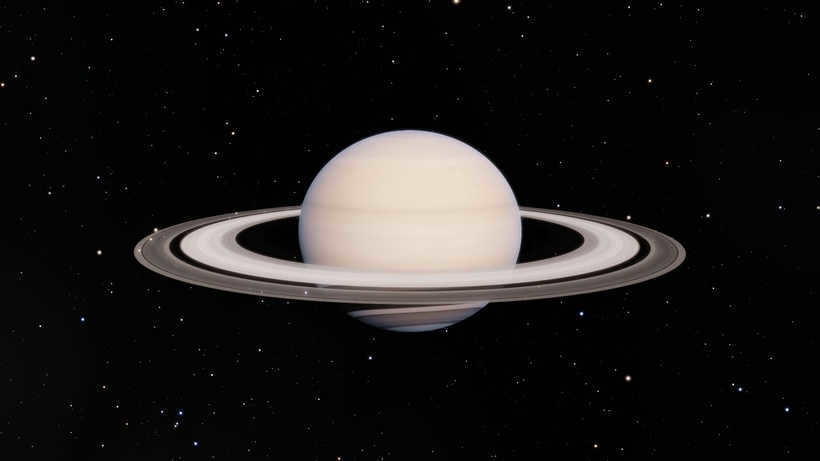
What are the celestial bodies
Undoubtedly, everyone is familiar with the concept of celestial bodies such as planets, their moons, stars, and asteroids. Comets have also captured the attention of many. However, there are other fascinating entities that deserve recognition:
- Space dust, which consists of microscopic particles from meteorites. Interestingly, approximately 60 tons of this dust settles on our planet every day.
- Planetary rings, which are clusters of cosmic dust, ice, and various particles that orbit around their respective planets.
- Meteors, which are larger than dust particles but smaller than asteroids.
- Planetesimals, which are objects that constantly grow in size as they accumulate new tiny particles.
These celestial objects only scratch the surface when considering the Solar System. When we expand our perspective to the entire Universe, the list of celestial bodies grows exponentially.
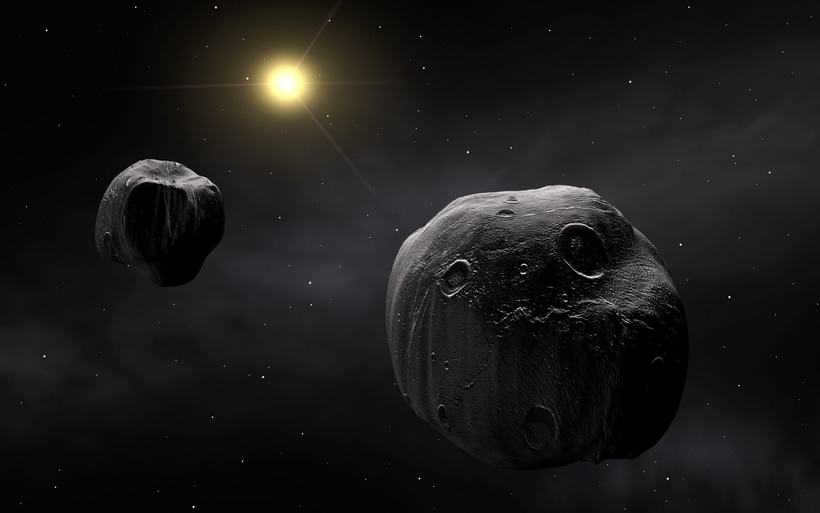
The Impact of Celestial Bodies on Earth
It is too monotonous to reiterate that the Sun provides warmth for our planet, the Moon reflects sunlight and illuminates our surroundings at night, and regulates the tides.
Not much is said about space dust, despite its continuously growing influence on our planet. As it accumulates in the atmosphere and eventually transitions with precipitation into the soil, bodies of water, and glaciers, it gradually alters their mineral composition. Consequently, glaciers contain a significant amount of cosmic dust, and their ice is melting due to global warming. This leads to an increase in the concentration of substances like nickel, iron, and cobalt in water.
Smaller meteorites resulting from the collision and crushing of asteroids pose a significant threat to Earth. While they are obliterated upon entering the atmosphere, they still manage to create punctures in the ozone layer, thus impacting the climate of specific regions.
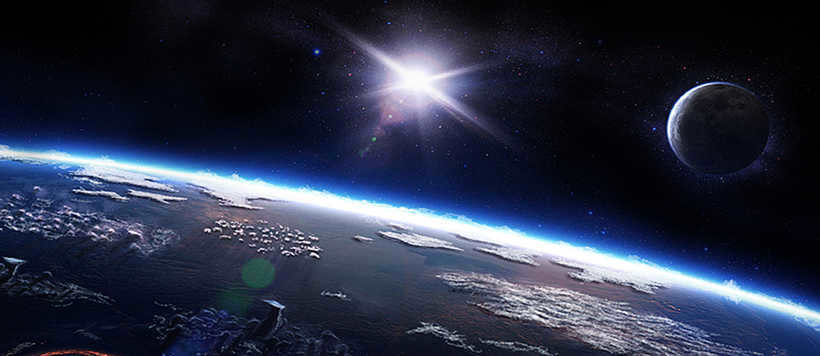
When a meteorite of considerable size approaches the Earth and is unable to burn up in the atmosphere, the potential consequences of a collision are best left unimagined.
The realm of space is where I find my passion. I am captivated by the various processes and celestial bodies that exist beyond our atmosphere. Their immense beauty, immense power, colossal size, and the vast distances that separate us provoke deep wonder and curiosity within me.
For the Earth, celestial objects are all physical entities that can be observed in the heavens. Telescopes are utilized for this specific purpose.
I categorize all entities with a specific form and mass that exist within the solar system as celestial bodies. These can encompass:
- other planets;
- asteroids and comets;
- The moon and man-made satellites;
- the Sun.
These are the closest entities that are in close proximity according to space standards. I have included man-made satellites in this enumeration as they orbit around the Earth. I have often mistaken them for stars in the nighttime sky.
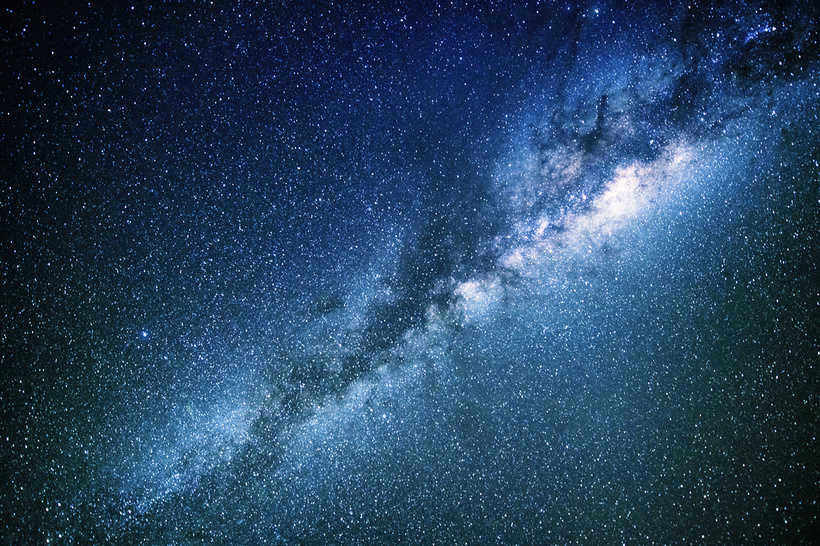
Celestial bodies can refer to objects that are located hundreds of thousands or even millions of light years away from our planet. One notable celestial body that can be observed throughout the year in the southern hemisphere of Earth is the Milky Way. Additionally, the sky is adorned with various constellations, including Polaris, among others.
Ways to Observe Celestial Bodies
To gain a more comprehensive understanding of celestial bodies such as our closest satellite or other planets, it is necessary to utilize a telescope. Every amateur astronomer, including myself, has had the opportunity to utilize this instrument at least once in their lifetime. With the aid of a telescope, one can examine specific sections of the starry sky, capturing breathtaking photographs. While it is typical for individuals to employ personal telescopes, there is now the option of utilizing radio telescopes, which were once exclusively reserved for specialized institutions.
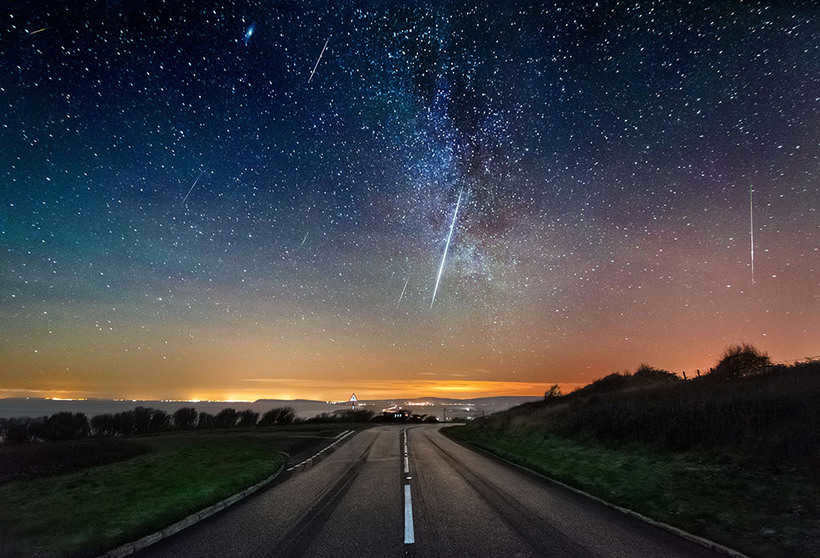
Observing celestial bodies does not require the use of a telescope. With the naked eye, you can marvel at Jupiter, the Andromeda Galaxy, the Moon, Venus, Mars, and even meteor showers during certain periods. I have vivid memories of my first encounter with a meteor shower. I remember preparing by stocking up on food and then climbing onto the roof of my garage. I laid a blanket down and gazed up at the sky in awe.
The vast expanse of outer space that envelops our planet is filled with an immense variety of solid objects, ranging from minuscule dust particles to colossal blocks.
Small entities within our Solar System encompass celestial bodies that do not fall under the classification of planets, dwarf planets, or their satellites. This group comprises meteor bodies, the majority of asteroids and comets, as well as the bodies within the Koyler belt.
Currently, there is no definitive criterion for determining the size limitations of small bodies. Some are as tiny as hundreds of microns in diameter, while others can span hundreds of kilometers.
Nevertheless, distinct dissimilarities exist, leading to the classification of small celestial bodies into various subspecies:
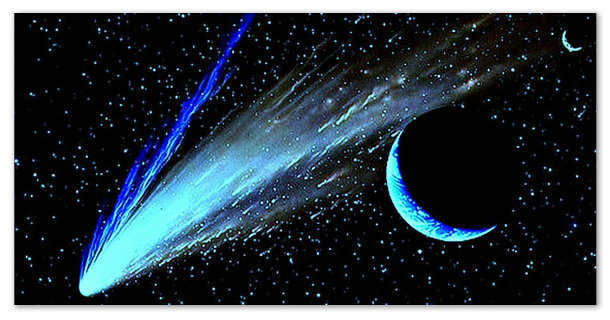
The most well-known “tiny settlers” of the universe
Among the most frequently mentioned small celestial bodies in scientific discussions are:
- The Asteroid Belt – Approximately 98% of the currently known asteroids are located between two orbits – and . There is also a disk-shaped region beyond the orbit of Neptune known as the Kuiper belt, where the majority of objects are composed of ice. One notable asteroid is Ida, which features bright blue areas covered in minerals.
- Halley’s Comet is one of the brightest, and Hale-Bopp’s comet has already been acclaimed as the most observed comet of the past century from the category of long-period comets, which have orbital periods exceeding two centuries.
- The Tunguska meteorite, which remains an unsolved mystery to this day, crashed in Eastern Siberia, unleashing a powerful light flash that sparked a devastating forest fire in the surrounding area.
Risks to Earth and Humanity
The larger the celestial bodies, the less likely they are to collide with Earth, allowing our planet to successfully avoid catastrophic impacts for hundreds and thousands of years. However, history has witnessed numerous such incidents.
The primary threat comes from meteorites crashing into Earth, as well as potential collisions between our planet and asteroids and comets.
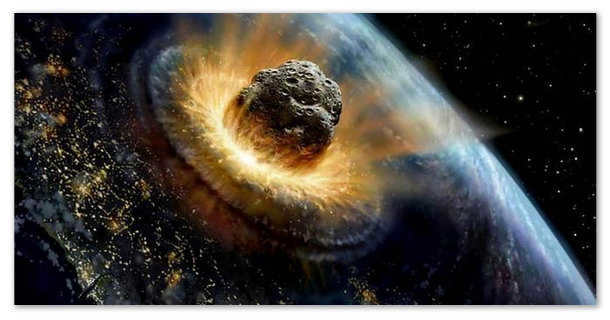
However, in most cases, it is simply a matter of convergence. The danger only arises when crossing the Earth’s orbit. With the advancements in technology today, nearly all large asteroids can be detected in close proximity to our planet. Comets, on the other hand, are more challenging to detect due to their significant distance from Earth. Additionally, their appearance is often quite unpredictable. The long-period comets are particularly hazardous as they have a higher likelihood of colliding with Earth. It is only through extensive astronomical research that reliable methods for safeguarding our planet against cosmic threats can be developed.
If you found this information helpful, I would be delighted to welcome you back.
The Categorization of Celestial Bodies
Eugene Afanasyevich Parshakov
Celestial bodies with high density can be referred to as silicate bodies, indicating that the primary constituent in them is silicate (rock-metal rocks), which is composed of the heaviest and most resistant elements: silicon, calcium, iron, aluminum, magnesium, sulfur, and various other elements and compounds, primarily oxygen. In addition to the silicate component, many bodies in this group also contain ice (water ice, water, carbon dioxide, nitrogen, oxygen), and a small number have gas (hydrogen, helium) components. However, their proportion in the overall composition is negligible. The silicate component typically accounts for over 99% of the substance.
The category of silicate celestial bodies in our Solar System comprises not just four planets and several moons, but also a vast array of asteroids that orbit within the asteroid belt located between the orbits of Mars and Jupiter. The quantity of asteroids, including notable ones like Ceres, Pallada, Vesta, Hygeia, and many others, is estimated to be in the tens of thousands (or possibly even hundreds of thousands or millions, according to certain sources).
There is a different set of celestial objects that consist mainly of ice. This group is the largest in the Solar System and includes various celestial bodies. One well-known member is the planet Pluto, along with numerous undiscovered transpluto planets. It also contains several large planetary satellites such as Ganymede, Callisto, Titan, Charon, and potentially dozens more. Additionally, all comets are classified within this group, and their estimated number in the solar system ranges from millions to possibly billions.
This collection of heavenly objects is the primary assemblage of celestial bodies within the solar system and, seemingly, throughout the entirety of the Milky Way Galaxy. Beyond Pluto, numerous scientists speculate the existence of additional planets. There is little doubt that their conjecture is accurate. The frigid celestial bodies are the most abundant and dominant group of celestial bodies within the Solar System and, without question, within all other star-planetary systems, regardless of size.
Comets, which are small icy celestial bodies, can be found not only in the outer regions of the Solar System, beyond Pluto. It seems that a significant number of comets are also located between the orbits of the giant planets.
The third group of celestial bodies in the solar system is the smallest but most massive. These bodies are made up of a combination of ice, silicate, and gas. There are only five celestial bodies in this group: the Sun, Jupiter, Saturn, Uranus, and Neptune. While all of these bodies contain hydrogen and helium, the proportion of these gases varies. During the formation of these gas bodies, which initially had a mass of less than 10 Earth masses, they were unable to retain light gases such as hydrogen and helium. Instead, they formed as icy bodies, composed of ice and silicate components. Over time, the gas component acquired during galactic winters underwent chemical reactions, transforming into ice. Hydrogen and oxygen reacted to produce water and water ice, while methane and other substances emerged from the gas component. As a result, the ice component became more prominent in the accumulation of diffuse matter on the surface of celestial bodies, while the gas component decreased.
Giant planets, in contrast to other celestial objects, possess a rapid axial rotation and an expansive atmosphere composed primarily of hydrogen and helium. Consequently, the equatorial regions of these planets may experience the escape of lighter gases into interplanetary space from their upper atmospheres as a result of the significant centrifugal force. For instance, Saturn’s upper cloud layers rotate around the planet’s center with a linear velocity of approximately 10 km/sec, while Earth’s velocity is only about 0.5 km/sec. It can be postulated that during previous galactic winters, the giant planets possessed considerably thicker and more extended atmospheres; however, following the conclusion of subsequent galactic winters, they have lost a portion of their atmospheres. Unlike icy and silicate celestial bodies that lose their gaseous components due to their relatively low mass, gas planets—particularly Jupiter—lose their gases due to their rapid rotation.
Celestial Objects and Their Classifications
In every popular science program that delves into the realm of space exploration, the term “celestial body” is an inevitable mention. It refers to a natural object that exists in outer space or originates from there. These objects are also commonly referred to as astronomical bodies. The classification of celestial bodies encompasses:
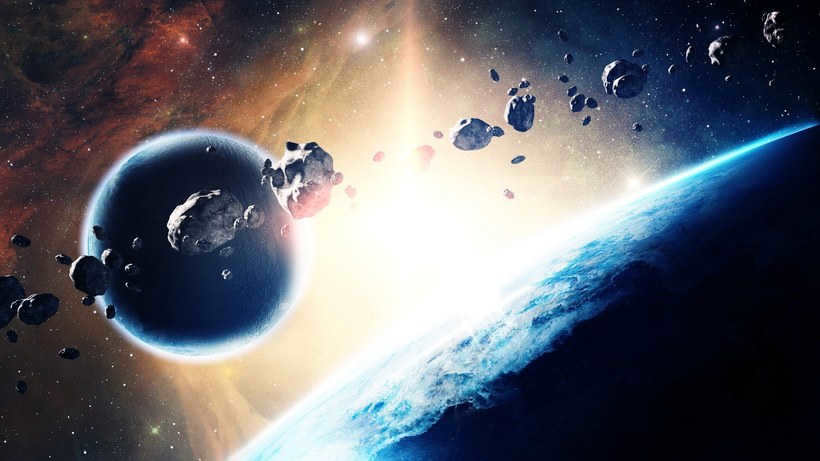
- comets;
- planets;
- meteorites;
- asteroids;
- stars.
All of these objects have numerous distinctions. Primarily, each astronomical entity possesses its own distinct size. Stars, for instance, are the largest, while meteorites are considered the smallest. Furthermore, various celestial bodies can create their own unique systems. A star system, for instance, is composed of planets. Asteroids, on the other hand, cluster together to form belts, and stars coalesce to form galaxies. In contrast, comets are typically solitary celestial bodies.
Comets are diminutive celestial objects that traverse an elongated orbit around the Sun. They are comprised of substances such as:
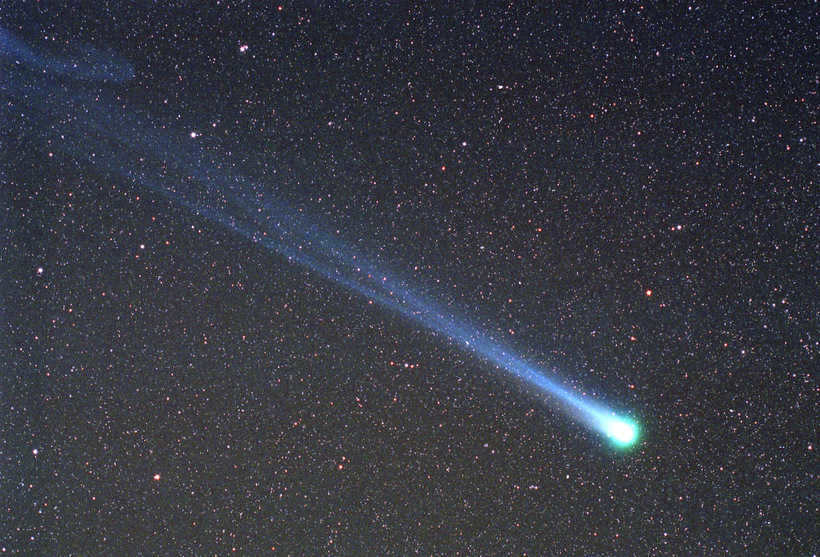
- ammonia;
- methane;
- other components.
The primary component of a comet is its nucleus, which constitutes nearly 100% of its mass. When observed from Earth, a comet appears as a radiant sphere with a tail, a phenomenon that occurs only when the celestial body approaches the Sun. During this proximity, various particles composed of dust and gas are emitted from the comet’s nucleus, forming its distinctive tail. The brightness of the comet intensifies as its distance from the Sun decreases, primarily due to the conversion of ice, another constituent of the comet, into gaseous form under the Sun’s influence. The accumulation of these gases contributes to the luminous radiance exhibited by the celestial body.
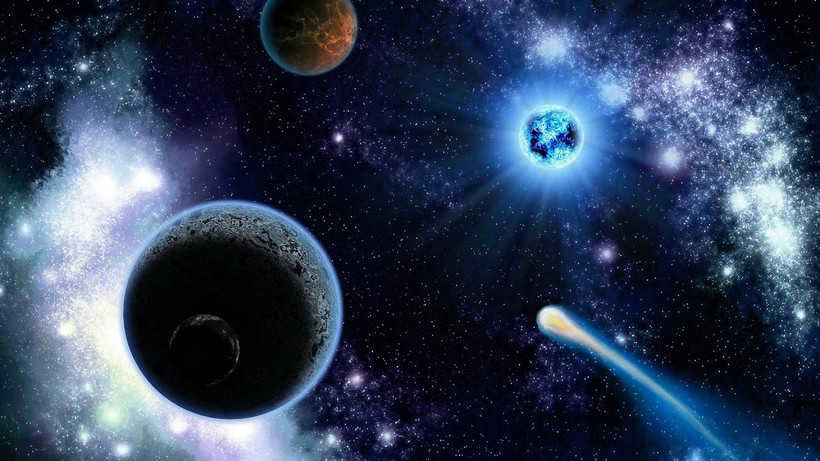
Scientists state that comets exist within the solar system. Each year, multiple of these astronomical objects are documented. Furthermore, over 3,000 comets have already been identified.
> Celestial bodies
Discover the entities of the cosmos through pictures: stars, nebulae, exoplanets, star clusters, galaxies, pulsars, quasars, black holes, dark matter, and energy.
For centuries, countless human eyes have gazed up at the night sky – towards the enigmatic lights – to witness the stars, nebulae, exoplanets, galaxies, pulsars, quasars, black holes, dark matter, and energy. the celestial bodies of our universe. Ancient civilizations perceived various animal and human shapes within clusters of stars, and attributed their own narratives to each one.
Exoplanets are celestial bodies that can be found outside the boundaries of our solar system. With the initial discovery of an exoplanet dating back to 1992, astronomers have successfully identified and confirmed the existence of over 1,000 exoplanets within planetary systems located throughout the Milky Way galaxy. It is widely believed that there are countless more exoplanets waiting to be discovered.
The term “nebula” originates from the Latin word for clouds. In essence, a nebula represents a vast cosmic cloud consisting of gas and dust particles that drift through the expanse of space. When multiple nebulae exist, they are referred to as nebulae. These nebulae serve as the fundamental building blocks of the universe, shaping and influencing the formation of stars, galaxies, and other celestial entities.
A number of stars exist within the context of a larger stellar grouping. Many stars exist as part of double systems, where two stars orbit a central point of mass. Others are part of triple star systems, while some stars are simultaneously members of expansive star clusters, which encompass numerous stars and are characterized by their densely populated nature.
Galaxies are vast collections of stars, dust, and gas that are held together by the force of gravity. They come in a wide range of sizes and shapes. Most celestial objects, such as stars with their planets and satellites, asteroids, black holes, neutron stars, and nebulae, are part of a galaxy.
Pulsars are among the most peculiar objects in the Universe. In 1967, while studying stars at the Cambridge Observatory, Jocelyn Bell and Anthony Hewish made a fascinating discovery. They observed an object that appeared similar to a star but emitted rapid pulses of radio waves. The presence of radio sources in space had been known for quite some time.
Black holes are definitely the most peculiar and enigmatic entities in the universe. Their peculiar characteristics can challenge the laws of physics and even the fundamental nature of reality. In order to comprehend the essence of black holes, we need to think outside the conventional boundaries and employ a touch of imagination.
Dark matter and dark energy are imperceptible to the human eye, yet their existence has been verified through observations of the cosmos. Billions of years ago, our universe came into existence following a cataclysmic Big Bang. As the early universe gradually cooled down, life began to emerge within it. Consequently, stars, galaxies, and other visible components were formed.
Many of us are familiar with stars, planets, and satellites. However, beyond these well-known celestial bodies, there are numerous other incredible sights to behold. There are vibrant nebulae, delicate star clusters, and immense galaxies. Additionally, there are enigmatic pulsars and quasars, as well as black holes that consume all matter that comes too close. Furthermore, there is the elusive substance known as dark matter, which remains invisible to our eyes. To learn more about any of these celestial objects, simply click on the corresponding image above or use the menu at the top to navigate through them.
To gain a better understanding of the nature of fast radio bursts and the characterization of interstellar dust, watch this informative video about the universe.
Fast radio bursts
Astrophysicist Sergey Popov discusses rotating radio bursts, the SKA telescope system, and the role of microwaves in the observatory.
Interstellar dust
Astronomer Dmitry Vibe discusses the phenomenon of interstellar reddening of light, the latest models of cosmic dust, and the various sources from which it originates:
In the vast expanse of our Universe, there exists an incredible array of cosmic entities known as celestial bodies or astronomical objects. It is important to note, however, that the majority of the observable deep space is comprised of empty space – a frigid and shadowy void that is home to an assortment of celestial bodies, ranging from the familiar to the peculiar. Referred to by astronomers as celestial objects, these celestial bodies, astronomical objects, and astronomical bodies are the substance that fills the void of the universe. Within our compilation of celestial bodies in deep space, you can acquaint yourself with a diverse assortment of objects such as stars, exoplanets, nebulae, clusters, galaxies, pulsars, black holes, and quasars. Additionally, you can peruse photographs of these celestial bodies and their surrounding space, along with models and diagrams that provide detailed descriptions and characteristics of their parameters.
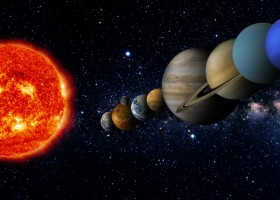
The definition and categorization of celestial objects, along with the fundamental physical and chemical properties of astronomical entities within the solar system.
Categorizing Celestial Bodies in the Solar System
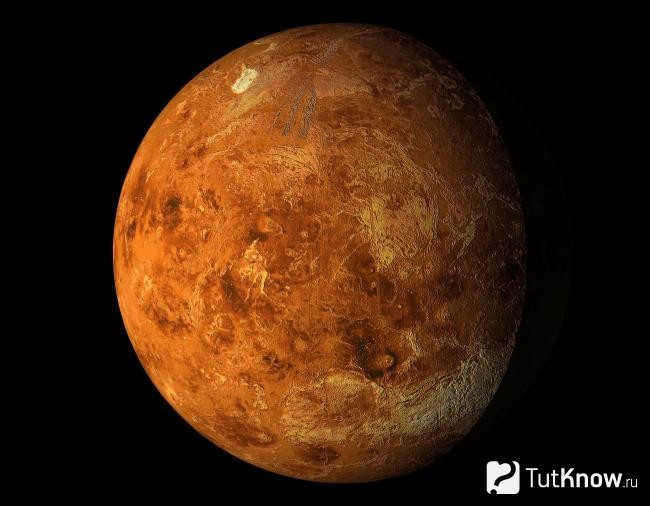
Each celestial object possesses unique characteristics, such as its origin, chemical composition, and size. These distinguishing factors allow for the classification of celestial bodies into various groups. Let us describe the different types of celestial bodies found in the solar system, including stars, planets, satellites, asteroids, comets, and more.
The solar system’s celestial bodies can also be classified based on their composition:
-
Silicate celestial bodies. This group of celestial objects is known as silicate celestial bodies because their main composition consists of rock-metallic materials, accounting for approximately 99% of their total mass. The silicate component in these bodies includes refractory substances such as silicon, calcium, iron, aluminum, magnesium, sulfur, and others. Although ice and gas components like water, ice, nitrogen, carbon dioxide, oxygen, helium, and hydrogen are present, their quantities are negligible. This category encompasses four planets (Venus, Mercury, Earth, and Mars), satellites (Moon, Io, Europa, Triton, Phobos, Deimos, Amalthea, etc.), and over a million asteroids that orbit between Jupiter and Mars (Pallada, Hygeia, Vesta, Ceres, etc.). The density index of these celestial bodies is 3 grams per cubic centimeter or higher.

The Sun, a celestial body consisting of a massive cluster of gas, is also a star. It possesses its own gravitational force, which acts as an attractive interaction and holds all of its components together. Fusion reactions occur within the core of the Sun, as is the case with any other star, resulting in the production of immense amounts of energy.
Within the Sun, there exists a core surrounded by a radiation zone where energy transfer occurs. This is followed by the convection zone, which serves as the origin for magnetic fields and the movement of solar matter. While the visible part of the Sun is commonly referred to as its surface, a more accurate term would be the photosphere or the sphere of light.
The Sun’s gravitational pull is so strong that it takes hundreds of thousands of years for a photon to travel from its core to its surface. However, it only takes 8 minutes for the same photon to travel from the Sun’s surface to the Earth. The Sun’s size and density enable it to exert its gravitational force on other objects in the solar system. The acceleration due to gravity on the Sun’s surface is approximately 28 m/s^2.
Here are some key characteristics of the Sun:
- Chemical composition: The Sun primarily consists of helium and hydrogen. While there are other elements present, their proportion is very small.
Distinctive Features of the Planets in the Solar System
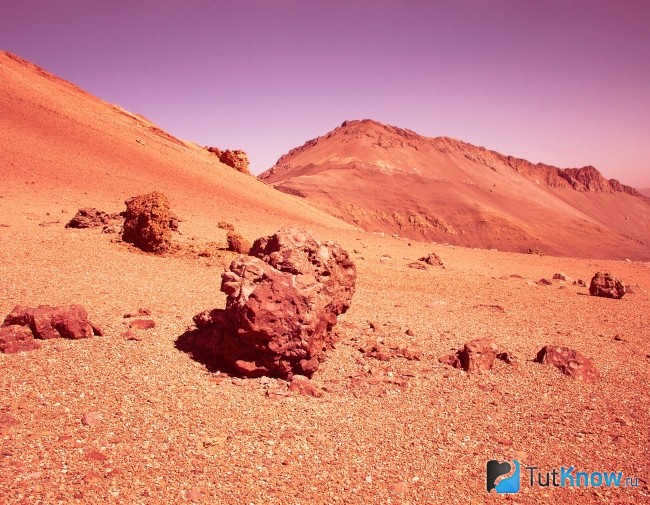
Celestial bodies known as planets revolve around a star or its remnants. The force of their own gravity causes planets to take on a rounded shape. However, simply having size and weight is not enough for planets to undergo thermonuclear reactions. Let’s take a closer look at the characteristics of planets by examining some examples from our solar system.
Let’s examine the distinct qualities of Mars:
- Chemical makeup of the celestial body. The primary components that constitute Mars are iron, sulfur, silicates, basalt, and iron oxide.
Pluto is distinguished by the following characteristics:
- Composition. The main constituents are rock and ice.
The key features of Uranus:
- Chemical composition. This planet is comprised of a fusion of chemical elements, including silicon, metals, water, methane, ammonia, hydrogen, and more, in significant quantities.
Features of celestial body satellites
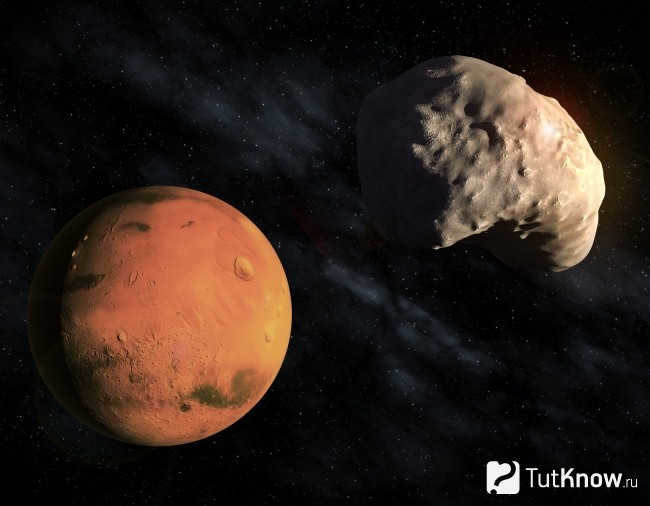
A celestial body that orbits around another celestial body under the influence of its gravity and along a specific trajectory is known as a satellite. Let’s explore some satellites and their unique characteristics in the vast expanse of the Visible Universe.
Deimos, which is a satellite of Mars and is considered one of the smallest, can be described as follows:
- Shape – it resembles a triaxial ellipsoid.
Now, let’s delve into the characteristics of Callisto:
Take a closer look at the characteristics of Oberon:
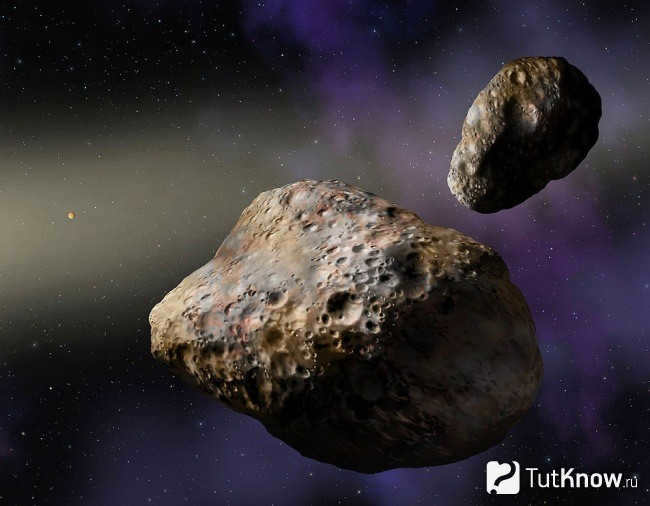
Asteroids are large chunks of rock that are primarily located in the asteroid belt between the orbits of Jupiter and Mars. They have the ability to deviate from their orbits and approach the Earth and the Sun.
One notable example of this type of celestial body is Hygeia, which happens to be one of the largest asteroids. Hygeia is situated in the main asteroid belt and can be observed with binoculars, although not always visible. It is particularly prominent during perihelion, when it is closest to the Sun in its orbit. Hygeia has a dim and dark surface.
Here are the main characteristics of Hygeia:
Hygeia has an iron-nickel core covered by a rocky mantle. The largest crater on Hygeia measures 460 km in length and 13 km in depth.
Now, let’s outline the key physical features of Hygeia:
Distinctive Features of Comets within the Solar System
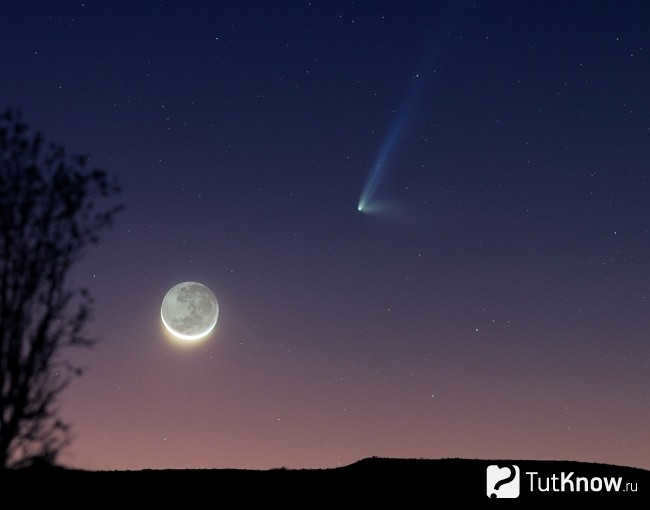
A comet is a small celestial body that orbits the Sun in an elongated shape. When these objects approach the Sun, they create a trail of gas and dust. This trail can take the form of a coma, which is a cloud that stretches for a great distance – from 100,000 to 1.4 million kilometers from the comet’s nucleus. In other cases, the trail appears as a tail, which can reach a length of 20 million kilometers.
Halley is a member of the comet group and has been known to humans since ancient times because it can be seen with the naked eye.
Characteristics of Halley:
- Mass: Approximately 220,000,000,000,000,000,000,000,000,000 kilograms.
The composition of the comet includes heavy water (deuterium), various organic compounds (such as formic acid and acetic acid), argon, and crypto, among others. It takes 2534 years for the comet to complete one revolution around the Sun. Unfortunately, there is currently no reliable information available regarding the physical characteristics of this particular comet.
Comet Tempel gained fame as it became the first comet to have a probe from Earth successfully land on its surface.
Key Features of Comet Tempel:
- Mass – estimated to be around 79,000,000,000,000,000,000,000,000,000 kg.
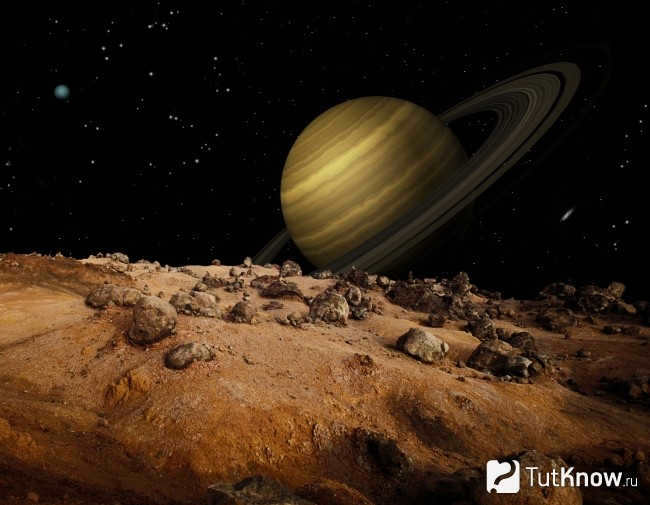
After years of researching the solar system, scientists have gathered a plethora of fascinating information about celestial objects. Let’s explore the ones that are influenced by their chemical and physical attributes:
The Sun takes the crown as the largest celestial body in terms of mass and diameter, with Jupiter coming in second and Saturn in third place.
Researching the characteristics of heavenly bodies enables humanity to make fascinating discoveries, substantiate specific patterns, and expand the overall understanding of the Universe. 
Let’s acquaint ourselves with the various celestial bodies comprising the solar system. We will become familiar with them in the sequence they are positioned from the Sun. First, we will provide a concise overview of the solar system’s entities and afterwards, we will gain some insight into observing the most captivating objects from Earth.
The structure of the celestial objects in the solar system.
Located at the core of the solar system is a celestial body known as the Sun 🙂
The Sun holds utmost significance in the solar system owing to its immense mass, which creates tremendous gravitational forces. These forces are responsible for keeping all the other celestial bodies – planets, asteroids, and comets – in close proximity to the Sun.
The Sun releases an enormous amount of energy every second, which is instrumental in the origin and sustenance of life on our planet Earth.
The other heavenly objects within our solar system can be simply categorized into the primary bodies of our solar system, which are the eight largest planets. Additionally, there are smaller bodies within our solar system such as dwarf planets, asteroids, comets, and the moons of the planets.
It is important to note that there are also transneptunian objects, which are extremely distant bodies within our solar system. These objects, more specifically asteroids, are located beyond the orbit of Neptune, which is the furthest planet from the Sun. One example of a transneptunian object is Pluto, which was once considered the ninth planet but is now recognized as a part of this unique group within our solar system.
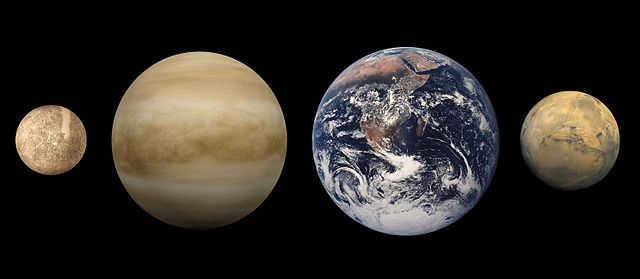
The four planets in the Earth group are the ones that are closest to the Sun.
Mercury is the planet that is closest to the Sun, followed by Venus, Earth, and then Mars.
There is a wealth of information available about these planets in the Solar System, so there is no need to go into detail here.
However, I will include this image that clearly depicts the relative sizes of the planets in the Earth group.
From left to right, the planets are Mercury, Venus, Earth, and Mars.
If you are looking for a concise summary of the planets in the Earth group, you can find it here:
The Largest Planets in the Solar System
The primary asteroid belt.
Following Mars’ orbit, we encounter the Main Asteroid Belt – a collection of small celestial bodies within our solar system.
Comprising several hundred relatively large rocky fragments and numerous smaller ones, known as asteroids, this region is home to various objects in orbit. The most significant of these is Ceres, with Vesta being slightly smaller. Together, these two asteroids account for over half of the total mass in this asteroid belt.
Remarkably, the combined mass of the Main Belt is merely 4% of the Moon’s mass. It may not seem substantial, but this belt holds great potential.
Notably, these asteroids present exciting prospects for future colonization efforts within our solar system. With their low gravitational pull, spacecraft can easily take off and land on them. Additionally, these asteroids serve as convenient sources of minerals, as they are readily accessible in the expanse of interplanetary space, eliminating the need to extract them from planets.
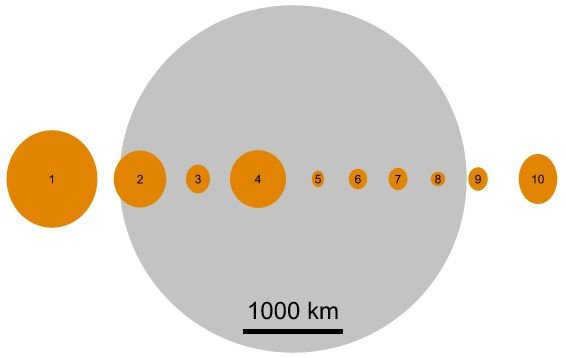
The Main Belt asteroids are identified by their unique numbers, which were given to them based on the order in which they were discovered. Provided below are the comparative sizes of the Moon and the top ten largest asteroids, along with their respective numbers.
1-Ceres, 2-Pallada, 3-Juno, 4-Vesta, 5-Astrea,
6-Geba, 7-Iris, 8-Flora, 9-Metida, 10-Gygea.
The immense planets are the largest entities in the solar system
The immense planets are the largest entities in the solar system following the Sun, namely: Jupiter, Saturn, Uranus, and Neptune. They are positioned beyond the Main Belt. They are colossal gas giants, comprised predominantly of gases such as ammonia, hydrogen, helium, methane, and others. While we are aware of the approximate composition of their atmospheres, the contents within the depths of these planets are still shrouded in speculation, with our understanding based solely on calculations.
Through computer simulations, it has been demonstrated that the immense planets play a vital role in safeguarding the inner planets of the Earth group from asteroids and comets. Without these entities in the solar system, the likelihood of our Earth being impacted by asteroids and comets would be several hundred times greater!
Small celestial objects in the solar system.
Astronomers are equally intrigued by the small celestial objects in the solar system, including planetary satellites, asteroids, comets, dwarf planets, and minor planets, alongside the eight major planets and the Sun.
Many asteroids and minor planets follow orbits around the Sun just like actual planets do. Some of them even rival the size of Mercury and the Moon.
These small celestial bodies serve as convenient bases for future human exploration of the solar system due to their low gravitational pull, making it easier to land and take off.
Moreover, certain asteroids can pose a potential threat to Earth, so it is vital to keep a close watch on them.
To learn more, visit:
Small Celestial Objects in the Solar System
Small planets in the solar system
Observations of Celestial Bodies in the Solar System
There are various methods used to observe celestial bodies in the solar system.
To begin with, it is possible to make observations with the naked eye, just like our ancestors did, by cross-referencing with astronomical charts. This allows for the identification of not only the moon in the sky, but also:
- Getting acquainted with the prominent constellations of the night sky
- Clear visibility of Saturn, Jupiter, and Mars
- During sunrise and sunset, it is possible to spot Venus, also known as the “morning star,” near the Sun
- If you are fortunate, you may even catch a glimpse of Mercury
If you’re looking for something more, then consider trying binocular observation. It will significantly broaden your possibilities – almost as if a new world will open up before your eyes.
Regular binoculars are affordable and versatile, not just for astronomy but also for everyday use. Binoculars are portable, easy to set up, and take up minimal space compared to a basic telescope.
With binoculars, you’ll be able to see the craters on the Moon, the rings of Saturn, and the satellites of Jupiter. You can even try spotting Uranus and observing the changing phases of Venus. However, the main celestial body to observe with binoculars is the Moon, as its appearance constantly changes with the lunar phases.
Now, you might be wondering which binoculars are best for astronomical observations.
(We’re not considering specialized astrobinoculars at the moment)
For initial observations of solar system objects, almost any model of binoculars will do. You’ll only start noticing the quality of the image with experience, so it won’t matter much at first.
Here are some tips for choosing binoculars for observing solar system objects:
– The larger and heavier the binoculars, the quicker your hands will tire out;
– The higher the magnification of the binoculars, the more the image will shake and the harder it will be to aim.
You can reduce fatigue and image shake by resting your elbows or the binoculars themselves on a stable surface.
It’s worth considering binoculars labeled as 8-20×50, meaning they have a variable magnification of 8-20x and a 50mm objective lens diameter. These binoculars allow you to adjust the magnification without taking your eyes off the view. The image quality may be slightly lower (as luck would have it), and they can be a bit heavy, so using a support is recommended. However, they are easy to aim, powerful, and reasonably priced.
By the way, there are even 8-32×50 binoculars, but in my opinion, that’s a clear overkill 🙂
In my opinion, a good choice for casual binocular observations of solar system objects would be models with 10×42 or 12×42 magnification – the perfect balance.
And if you have steady hands, you can go for 10×50, 12×50, or even 10-30×60 🙂 .
I don’t recommend binoculars with an aperture smaller than 32mm for astronomy – their size and price are not worth it. And as for 22×32 binoculars, I don’t recommend them either – just look through them, and you’ll understand why.
Personally, I use 10×32 binoculars (compact and lightweight roof prism) because I carry them with me all the time, not just for astronomy. In this case, size and weight matter more.
Instead of chasing after binoculars with high aperture and magnification, it is more reasonable to consider telescopes if you are looking for something more, including luminosity and magnification.
Using a telescope greatly expands the possibilities for amateur astronomers to observe the bodies of the solar system. Rather than just being able to see craters and mountains on the Moon, they can now examine them in more detail. Similarly, on Jupiter, individual belts become visible, and the disk around Saturn can be seen as separate rings. Uranus can be observed as a large speck, although without much detail. With the help of a telescope, previously inaccessible bodies of the solar system such as Neptune, Ceres, and Vesta can now be seen. It is also possible to try and observe the satellites of Mars, namely Phobos and Deimos.

